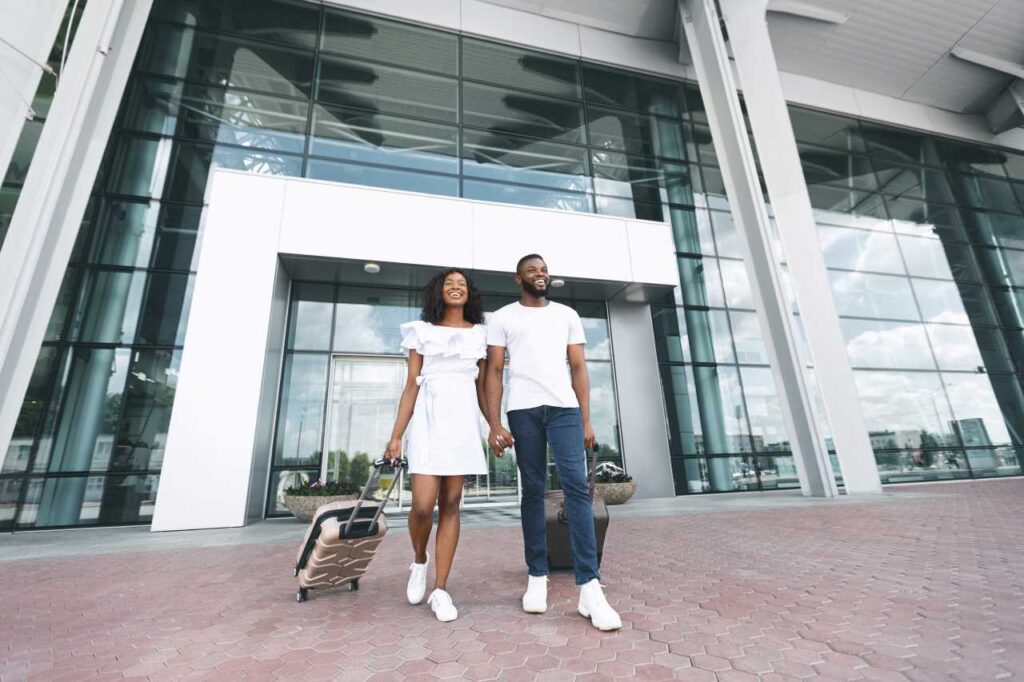If you’re applying for a K-1 visa to bring your fiancé(e) to the U.S., it’s important to know the typical processing times. Currently, the entire process usually takes between 4-7 months. This timeline can vary depending on a few factors, but here’s a general breakdown of what you can expect.
How Long Does It Take for Form I-129F to Be Approved?
The first step in the K-1 visa process is for the U.S. citizen fiancé to file Form I-129F with U.S. Citizenship and Immigration Services (USCIS). This form is used to prove that the relationship is legitimate and that both parties are eligible for the visa.
USCIS typically reports that the processing time for Form I-129F is around 6.4 months. However, according to real-time tracking services like Law and Visas’ partner Track My Visa Now, the approval time is currently averaging 4-7 months. This can vary depending on the specifics of your case.
Once you file the form and supporting documents, USCIS will usually send you a receipt notice within 30 days. If they need more information, they might issue a Request for Evidence (RFE). Once Form I-129F is approved, you will receive an official approval notice.
What Happens After USCIS Approves Form I-129F?
After USCIS approves Form I-129F, the National Visa Center (NVC) takes over the next steps. The NVC stage typically takes around 6-8 weeks, though it may vary depending on your home country’s specific requirements.
Once the NVC receives the approved form, the U.S. Embassy or consulate in your fiancé’s home country will send them a notice. This notice will include the date and location of the visa interview as well as a list of required documents. This is known as the U.S. Embassy Packet of Instructions.
The fiancé(e) must also complete the DS-160 form (the Online Nonimmigrant Visa Application), which is an important part of the K-1 visa process. Once this form is completed online, they will need to print out the confirmation page and bring it to the interview.
How Long Is the Wait for the K-1 Visa Interview?
On average, the wait for a K-1 visa interview is around 1 month. The fiancé(e) will attend this interview at the nearest U.S. Embassy or consulate in their home country.
During the interview, the consular officer will review the application and documents, and they will usually make a decision on the spot. In some cases, the officer may request additional documents, which will need to be submitted directly to the U.S. Embassy or consulate.
After the K-1 Visa Is Approved: The Next Steps
Once the K-1 visa is approved, the fiancé(e) has 90 days to enter the United States and get married. After the marriage, the next step is to apply for an Adjustment of Status (AOS) to change from a K-1 visa to a Marriage Green Card.
The timeline for K-1 to AOS processing typically takes anywhere from 10 to 23 months, depending on the specific circumstances of the case. This timeline may be longer if there are delays or additional requirements.
How can I check the status of my K-1 visa application
To check the status of your K-1 visa application, you can follow these steps:
1. Use the U.S. Department of State’s CEAC Portal
- Navigate to the Consular Electronic Application Center (CEAC) website.
- Click on “Check My Visa Application Status” under the Nonimmigrant heading.
- You will need your visa case number (13 characters, typically in the format of three letters followed by ten numbers) or your application ID (10-character alphanumeric) to check your status.
2. Check USCIS Status for Form I-129F
- If you want to check the status of your initial petition (Form I-129F), visit the USCIS Case Status Online page.
- Enter the receipt number from your Form I-797 (Notice of Action), which is also 13 characters long.
3. Contact USCIS or the NVC
- For further inquiries, you can call the USCIS Contact Center at 1-800-375-5283. Have your receipt number ready for reference.
- If your case is with the National Visa Center (NVC), you can also reach out to them directly for updates.
What factors can cause delays in the K-1 visa processing time
Several factors can contribute to delays in the K-1 visa processing time. Understanding these can help applicants navigate the process more effectively. Here are the most common reasons for delays:
1. Incomplete or Inaccurate Documentation
- Submitting forms that are incomplete or contain errors is a primary cause of delays. It’s crucial to ensure all forms are filled out accurately and that all necessary supporting documents are included.
2. Service Center Backlogs
- Different USCIS service centers have varying processing speeds, and some may be experiencing significant backlogs. High volumes of applications can lead to longer wait times, especially during peak seasons.
3. Embassy and Consulate Backlogs
- Once the application reaches the embassy or consulate stage, applicants may face additional delays due to high application volumes. Some embassies have extensive backlogs, which can delay interview scheduling.
4. Criminal History or Immigration Violations
- If either the U.S. citizen or the foreign fiancé(e) has a criminal history or prior immigration violations, this can trigger additional scrutiny and delay processing times due to required background checks.
5. Medical Examination Delays
- K-1 visa applicants must undergo a medical examination, and delays in scheduling or completing this requirement can significantly impact overall processing time.
6. Multi-Agency Reviews
- Cases that require reviews from multiple agencies (e.g., security checks) can experience delays if one agency takes longer than expected to complete its review.
7. Seasonal Variations
- The time of year when the application is submitted can also affect processing speed. Applications filed during certain months may be processed faster than those submitted during peak periods.
8. Natural Disasters or Catastrophic Events
- External factors such as natural disasters, wars, or other catastrophic events can disrupt processing capabilities at consulates and embassies, leading to delays.
It’s important to note that these are average timelines, and delays can occur depending on various factors. To stay on top of your application and make sure everything goes smoothly, consider working with Law and Visas to guide you through the entire process.
How Law and Visas Can Help?
At Law and Visas, our team of expert immigration consultants is here to make your travel straightforward and successful. Whether you’re applying for a F2A Visa or a B-2 Visa, we handle every step—from preparing your application to gathering the required documents.
Our Immigration Consultants and Lawyers ensure that your application meets the highest standards, with no details missed. We’ll also keep you informed throughout the process and coordinate with the immigration office or embassy on your behalf.
Law and Visas have a strong record of helping clients secure the visas/permits they need for International travel. You can call us today at +234 812 5505 986 to learn how we can help you.




